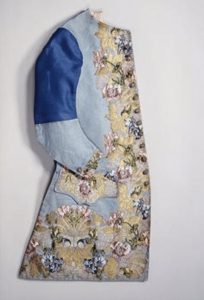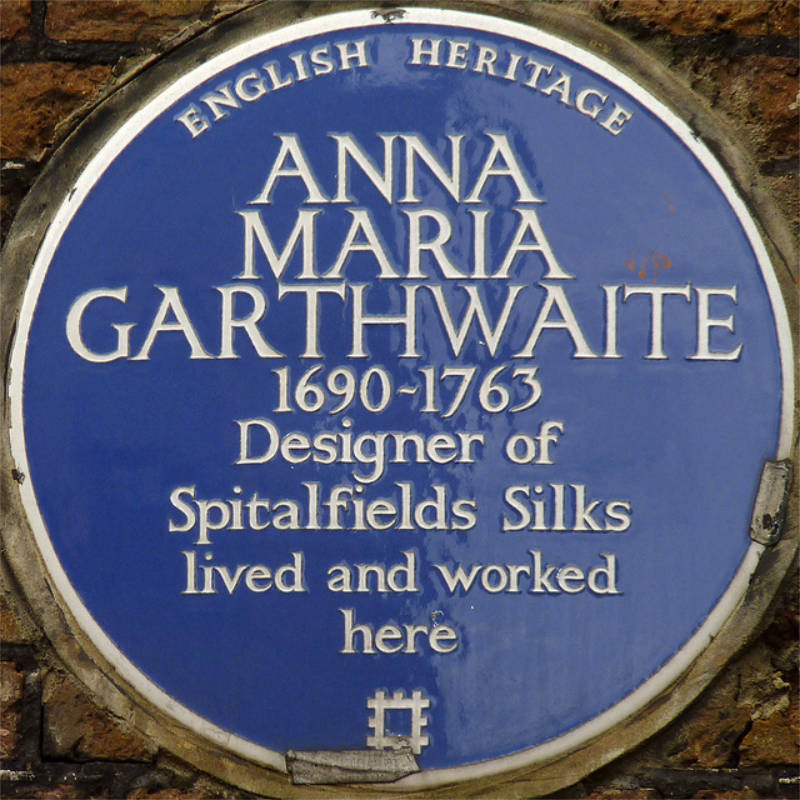Huguenot Pattern Designers

Captain Peter Lekeux (1684-1743)
Captain Peter Lekeux was one of most prominent master weavers in the English silk industry and one of the ten most wealthy Huguenots in Britain. Peter Lekeux was born in London into one of the most important families in the English silk industry. Lekeux bought at least 18 designs from Anna Maria Garthwaite, for very expensive and fashionable designs woven with silver thread. He became very prosperous (he would have been a millionaire many times over by today’s standards) and owned a large house in the new quarter of Spitalfields, the Old Artillery Ground. He left £7,400 in his will which would be over £1 million today. His title of Captain refers to his rank in the local militia. The militia (sometimes called Trained Bands) were an important part of defence and served as a reserve force. They were made up of small groups of local men, usually of moderate wealth, who purchased their own weapons and trained together for the purpose of providing local defence.
James Leman (1688-1745)

One of the most outstanding designers of sumptuous Spitalfields silk was James Leman who lived in Stewart Street. He trained as a designer as well as a manufacturer, which was unusual for weavers at that time. James Leman’s album is held in the Victoria and Albert Museum and is the oldest surviving set of silk designs in the world. It contains ninety patterns created when he was a young man. The designs are most striking, mixing bold colours and natural and invented flowers, geometric patterns and architectural elements. On the back are explanations of how to translate the design into the woven cloth. They used metal threads which came alive by candlelight.
Peter Duthoit Senior (1693-1764), and Peter Duthoit Junior (1719-1777)
The Duthoits were a silk weaving family originating from near Lille in the north of France. Some of the family settled in Canterbury and set up as weavers in the mid 16th Century whilst others made their way to Brick Lane and Wood Street (now Wilkes St) in Spitalfields. Peter Du Thoit Senior had a business in Brick Lane but later moved to No 3 Wood Street – a more highly rated location. In 1715 Peter senior married Jane Messman, the daughter of another wealthy weaver. Their eldest son Peter Junior went into partnership with his father and is noted in 1763 as a ‘weaver of black silk’. Peter Junior retired to Canterbury and died in 1777 where he is buried at St Dunstan’s Church. The Duthoit family remained in the weaving business until the late 19th century.

Anna Maria Garthwaite (1688-1763)
Surprisingly, another of the most famous designers of Spitalfields silk was not a Huguenot. Anna Maria was the daughter of a clergyman, born in Lincolnshire in 1690. Anna Maria had a talent as an artist and spent her time painting flowers. Her paintings were beautiful – petals, stems, winding creepers, sprigs of flowers and cascades of foliage. She asked an agent to show her work to the Huguenot Master Silk Weavers in Spitalfields. Rather like JK Rowling who only wrote her initials when she sent her Harry Potter book to the publishers, Anne Maria used A.M. Garthwaite so that her designs would not be rejected just because she was a woman. In those days men dominated most of the trades and held most of the responsible positions. When her father died, with the small legacy he left her, she travelled to London with her sister and set up home at 2 Princelet Street, Spitalfields. Here she created the most stunning designs for the Huguenot silk weavers to weave.
